Whyte claims its T-140 RS is a bike to do it all, from technical trails to long rides and trail centre laps.
The aluminium frame provides 135mm of rear-wheel travel, which is paired up front with 140mm forks, giving the bike its name. This mix, Whyte claims, provides enough travel for rough-terrain control, while also benefiting from ample pedalling efficiency.
The T-140 has been developed with input from Whyte’s Sam Shucksmith – two-time UK Enduro champ, so expect a bike that’s comfortable on the descents.
Geometry is designed to give heroic ride handling, with no learning curve, while a flip chip alters the shape of the bike for a higher and steeper shape, or a low and slack mode.
Whyte T-140 RS 29er frame and suspension
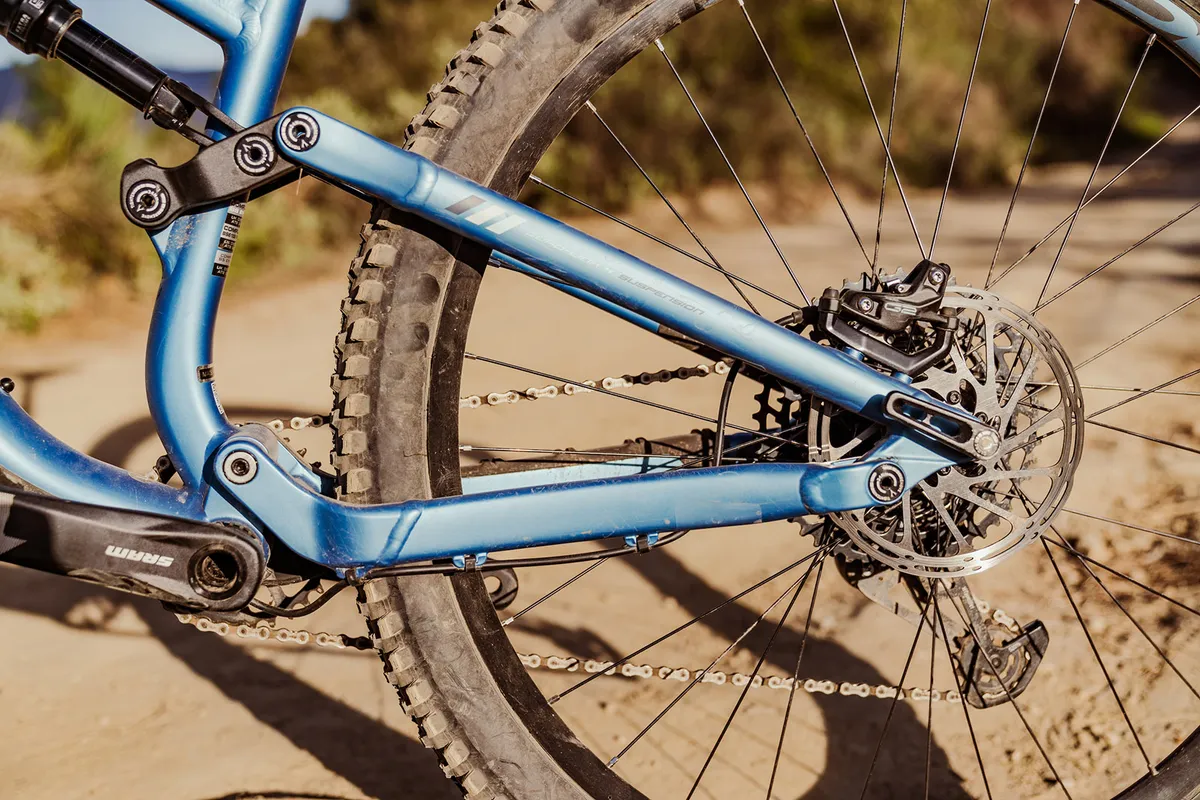
The frame is constructed from 6061 aluminium, with mild bends along tube lengths and subtle hydroforming around frame joins. Braces act to strengthen certain junctions, too.
Whyte provides owners with a four-year frame warranty, as well as a lifetime bearings warranty, there to keep everything running smoothly for as long as you’re riding the bike.
At the same time, the UK-based brand says the frame has unique weather-sealing features.
There’s space in the frame for a bottle, while the curved belly that contributes towards a distinguishably ‘Whyte’ profile, has a protective patch to guard it from rock strikes.
There’s similar on the driveside chainstay too, to keep the bike quiet and the paint intact.
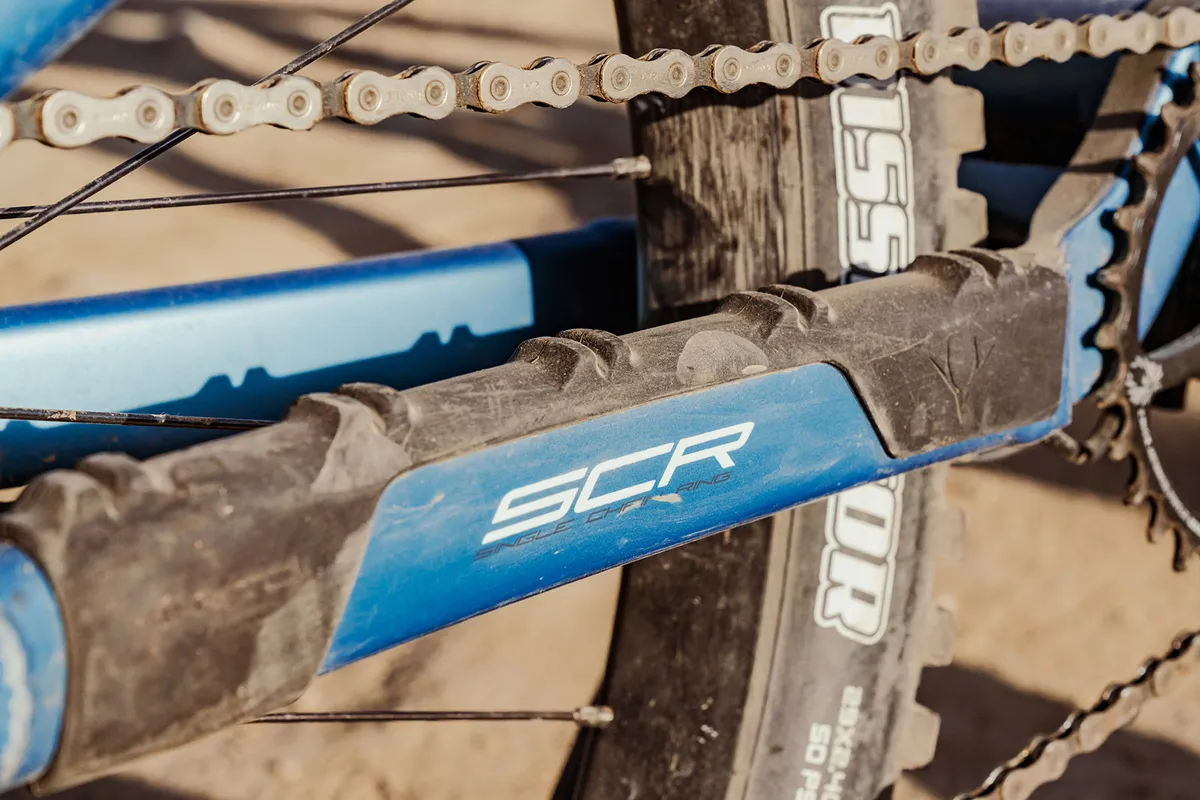
Cables run internally, entering the frame just behind the head tube through slightly rubbery guides, before popping out and looping under the bottom bracket shell. From there, it’s through the chainstays to where they’re needed, either for the rear derailleur or brake.
The 135mm of rear-wheel travel is controlled by a four-bar (Horst-link) suspension linkage, whereby a pivot on the chainstays is designed to separate pedalling and braking forces from the suspension.
This is done to keep the bike feeling efficient when you're on the pedals, while also ensuring the suspension stays active and supple under braking, boosting grip.
Whyte T-140 RS 29er geometry

The geometry on the T-140 doesn’t rock the boat, with a shape that’s modern without being radical. It fits the remit of being easy to jump on and ride.
This means the angles aren’t overly slack or steep, and tube lengths are long, without being so extreme that it takes a readjustment of your riding style to get the most out of the bike.
Whyte has fitted a geometry-adjusting chip into the shock yoke, moving the eyelet forward or back in the yoke, to alter the BB height and the frame’s angles.
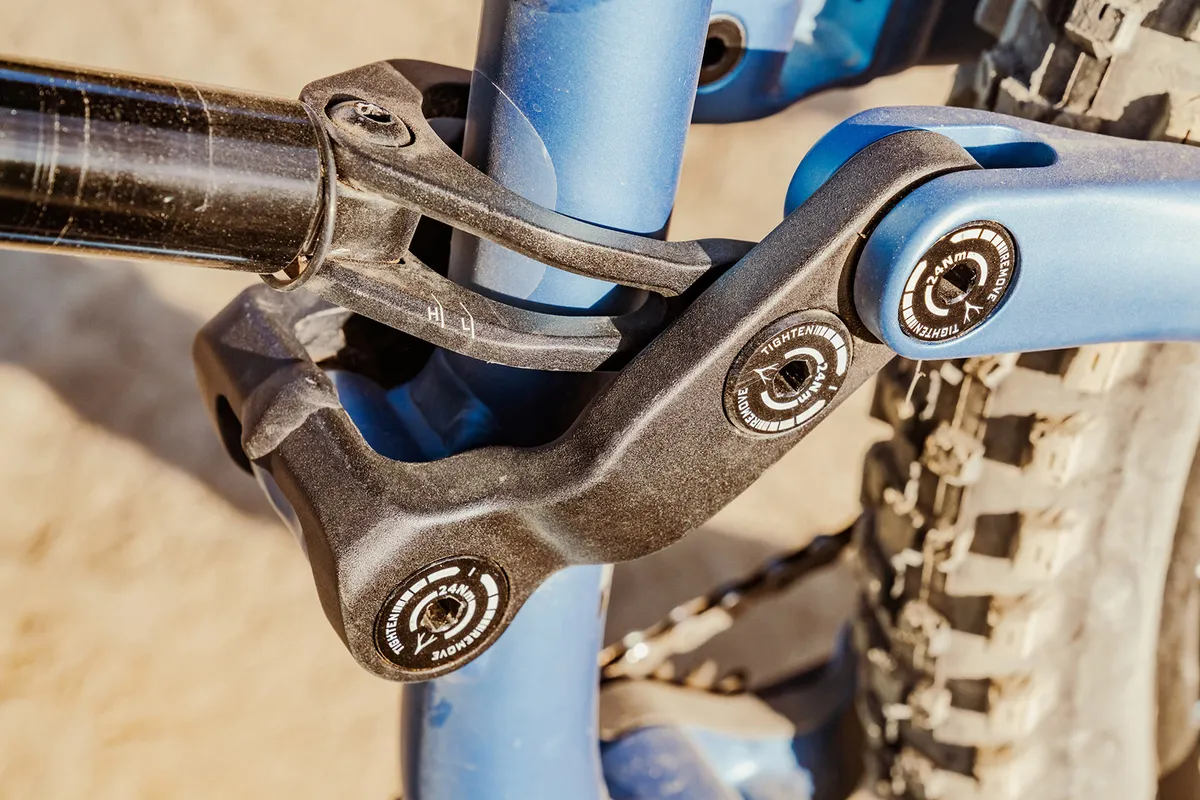
The Shape.It link gives 8mm of BB height adjustment and 0.6-degree adjustment to the head angle without altering suspension kinematics.
In its lower setting, I measured the head angle at 64.7 degrees and the effective seat angle at 76.9 degrees, at my 750mm saddle height – a little steeper than on Whyte's geometry chart.
For the purposes of this review, I kept the bike largely in its slacker setting.
The reach is moderately long at 483mm (size Large), while the chainstays are 435mm across the three sizes (Medium, Large, XL) offered.
| | M | L | XL |
|---|---|---|---|
| Seat angle (degrees) | 76.2 | 76 | 75.8 |
| Head angle (degrees) | 65.3 (64.7) | 65.3 (64.7) | 65.3 (64.7) |
| Chainstay (mm) | 435 | 435 | 435 |
| Seat tube (mm) | 420 | 445 | 470 |
| Top tube (mm) | 603.9 | 636.6 | 667.7 |
| Head tube (mm) | 120 | 135 | 148 |
| Bottom bracket height (mm) | 338 (330) | 338 (330) | 338 (330) |
| Wheelbase (mm) | 1,215.1 | 1,249.5 | 1,282 |
| Standover (mm) | 735 | 735 | 735 |
| Stack (mm) | 633.2 | 646.8 | 658.5 |
| Reach (mm) | 455 | 483 | 510 |
Whyte T-140 RS 29er specifications
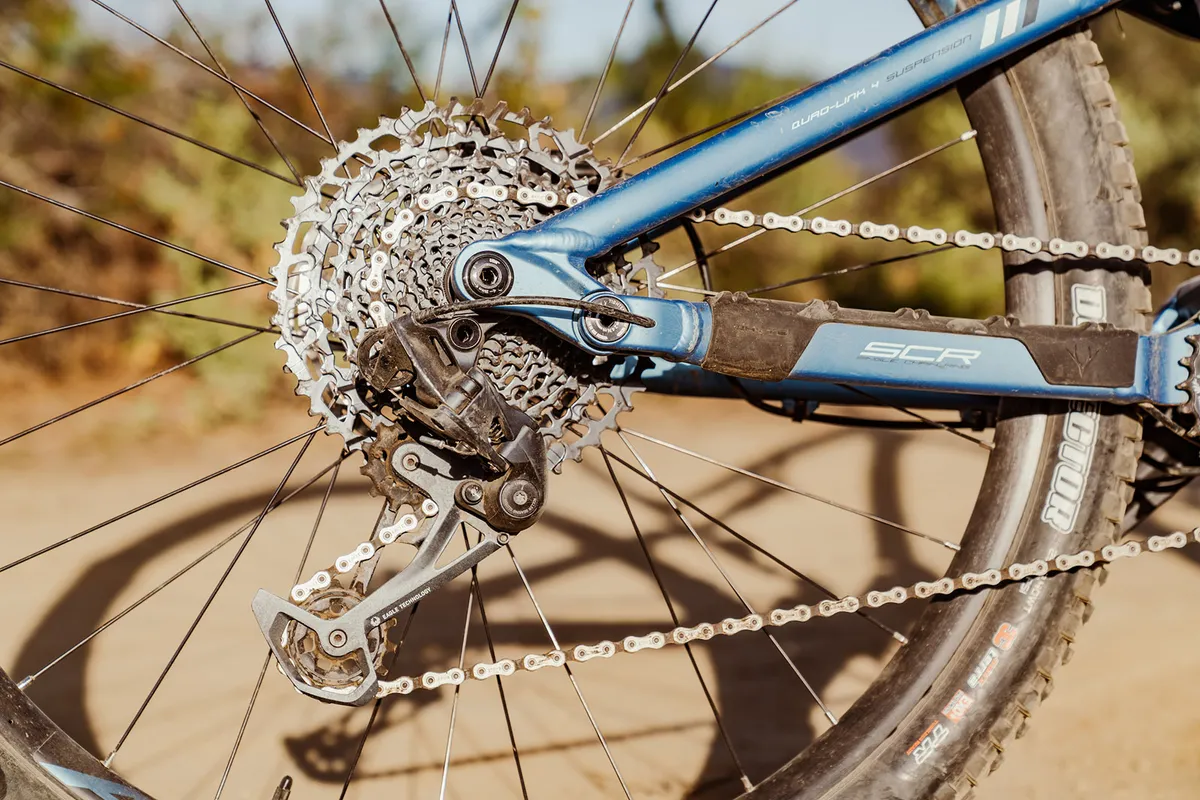
At £4,099, the T-140 RS is one of the more expensive bikes in our 2023 Trail Bike of the Year test. For that much cash, and with an alloy frame, rather than carbon, the spec list looks okay rather than exceptional.
Suspension is clearly an important element for Whyte, though, because both units are decent.
The fork is a Fox 34 Performance Elite – 140mm of travel and a GRIP2 damper offering high- and low-speed compression and rebound damping.
All it misses out on compared to the top-level Factory fork is that gold Kashima coating on the stanchions.
It’s a similar story at the back, with a Fox DPS Performance Elite shock controlling the rear suspension.
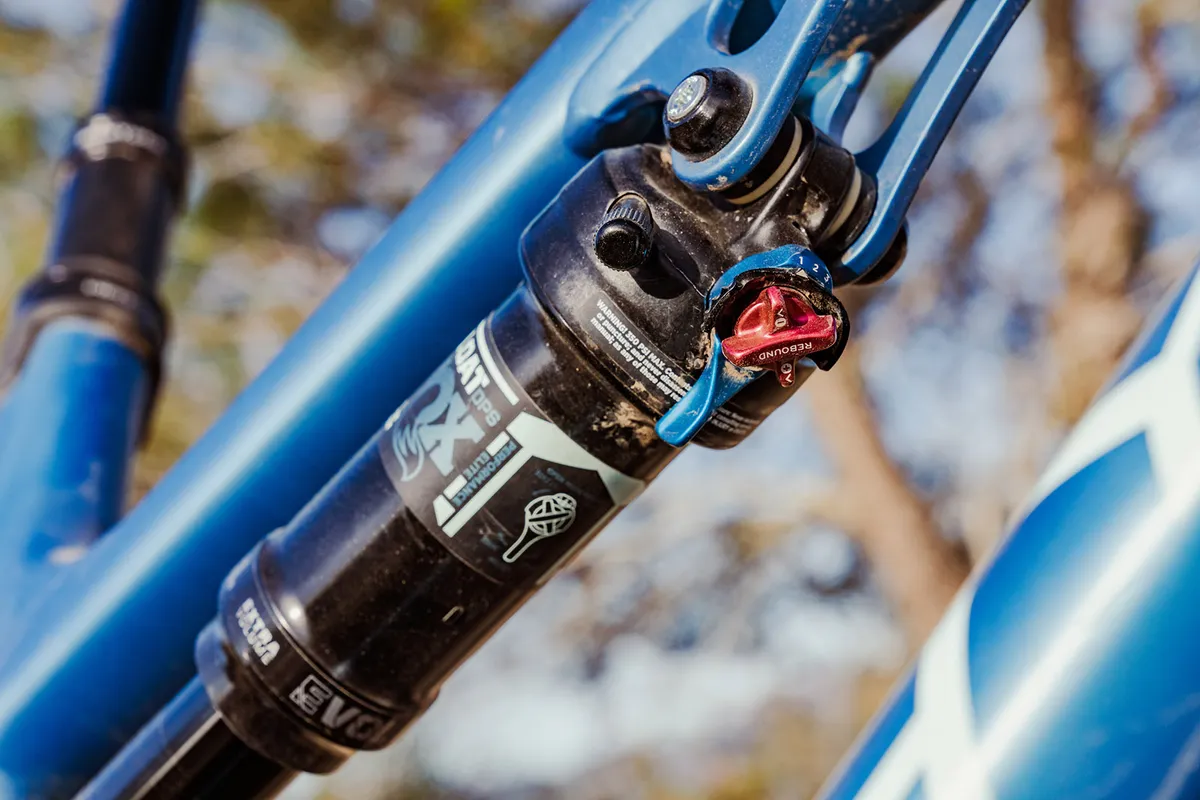
This gets a three-position compression damper, along with Open mode low-speed compression damping adjustment for finer tuning of the bike’s feel.
At the front of the bike, there’s a Maxxis Minion DHF in 29x2.5in WT flavour. It has the MaxxTerra compound and the lighter EXO casing. The rear wheel has a Maxxis Dissector in a 2.4in width, and the thicker, better damped and more puncture-resistant EXO+ casing.
The drivetrain and brakes come from SRAM. The GX shifter and derailleur will take the headlines, but there’s a heavier NX PG1230 cassette, which has an 11-50t range and sits on a regular HG-splined (rather than XD) freehub. This means upgrading to a lighter, 10-52t SRAM cassette will require a fresh freehub body for the wheel.
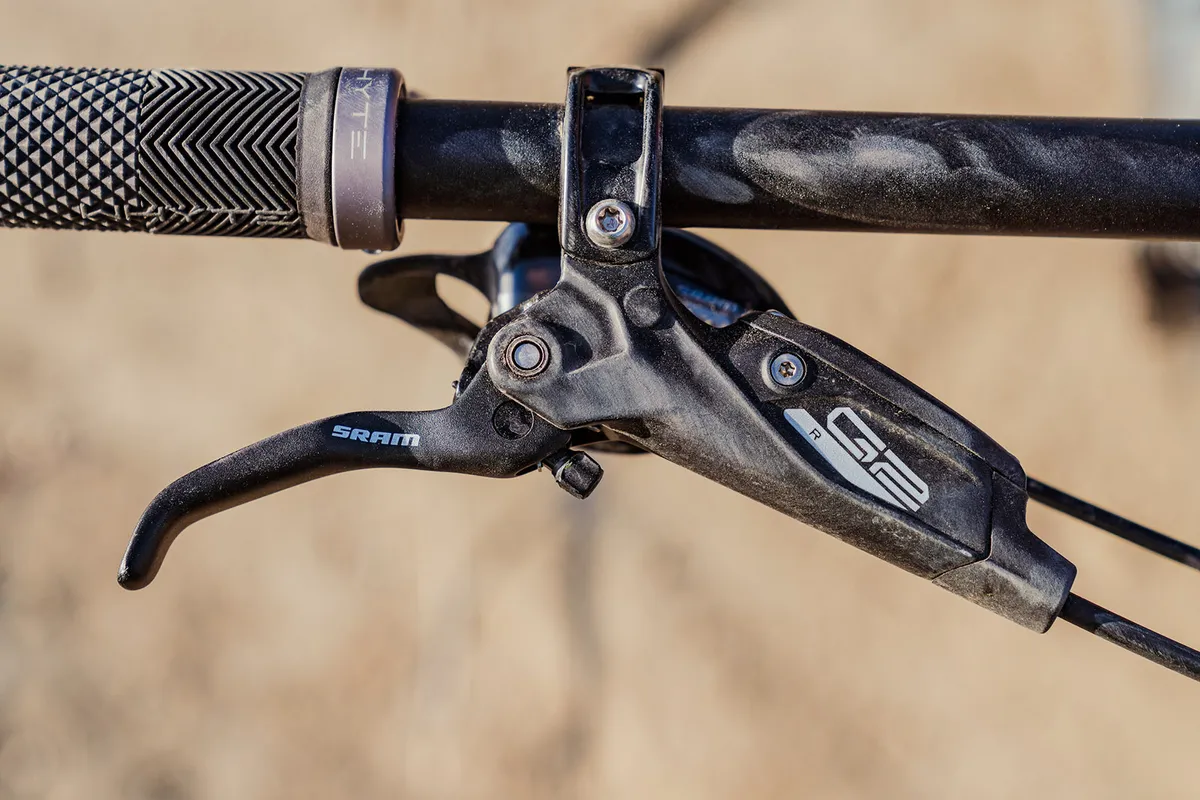
The brakes are SRAM’s G2 R. They’re the basic version of the brand's four-piston brake, and clamp onto 180mm rotors front and back.
The Bike Yoke Divine dropper post is a consistent performer, in our experience. The rest of the finishing kit comes with Whyte’s logo stamped on it.
Whyte T-140 RS 29er ride impressions
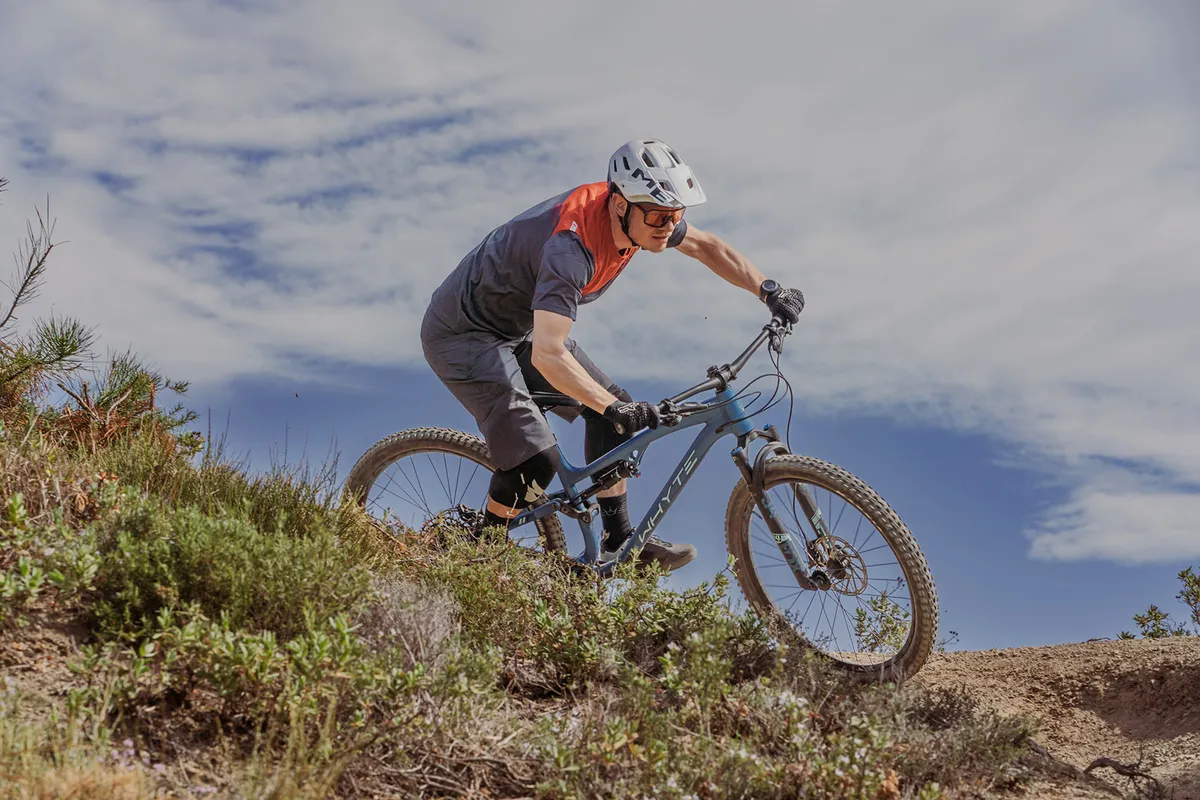
This T-140 was tested alongside seven other leading trail bikes.
During testing, I took all the bikes to the same locations and trails for some dedicated testing on a wide variety of terrain.
From hand-dug cheeky tracks in the woods to trail centre laps and BikePark Wales’ rocky runs, I ensured the bikes were exposed to every type of trail such a bike is likely to be ridden on.
Riding the bikes back to back, usually with four in each testing session, ensured I was able to pick out the finer performance points of each one.
Whyte T-140 RS 29er climbing performance
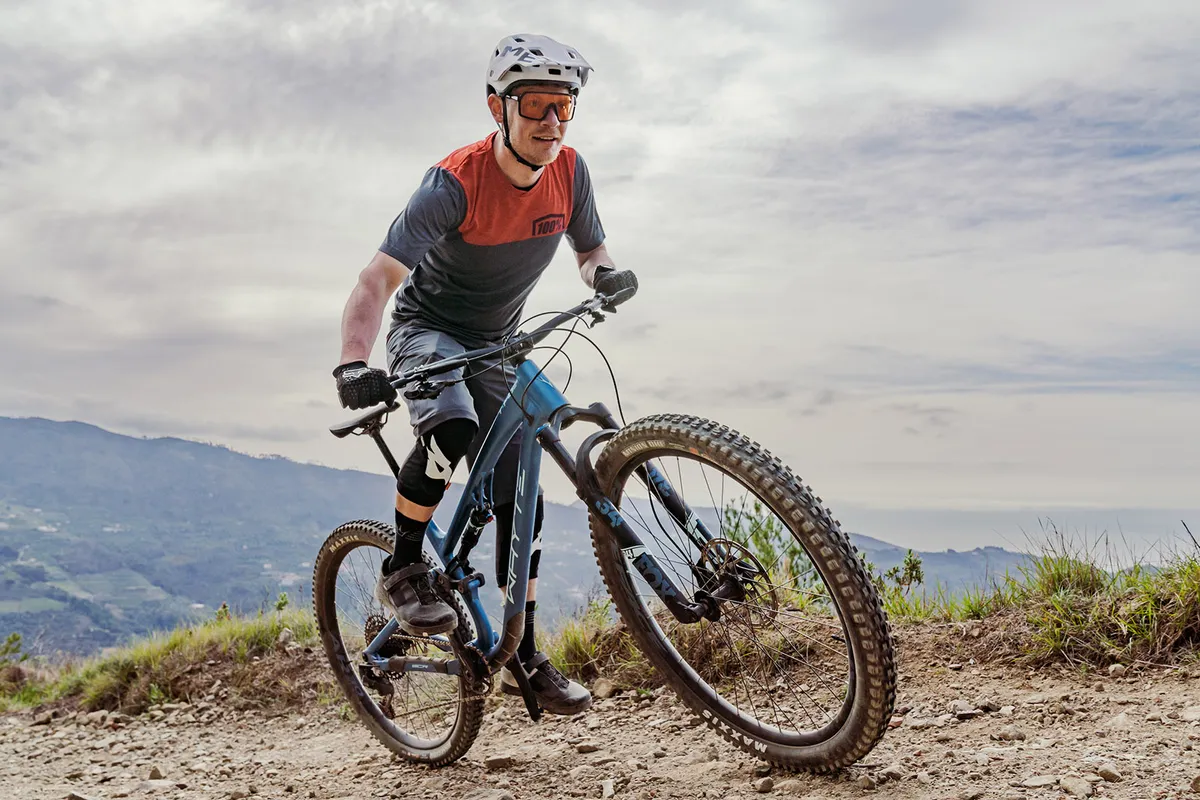
Climbing on the T-140 is a fuss-free affair, with the rear suspension staying put when you’re sat down and spinning in circles. The shock remains relatively static, and it certainly doesn't feel as though you’re wasting energy via suspension bob.
Pedal a little more enthusiastically, and the rear end will start to oscillate a bit, but unlike many softer-feeling bikes, the T-140 feels like one of the more efficient trail bikes out there.
If you find the T-140 bobs more than you’d like, you can tweak the feel of the shock’s Open mode into a slightly more damped setting.
Doing so provides a noticeable, but subtle, improvement. However, generally I preferred the feeling of the shock in its most open setting.
Stand up, in Open mode, and the suspension will bob a bit, however not as markedly as on bikes such as the Vitus Escarpe or the Marin Rift Zone XR.

On off-road sections, where I wanted to stand, I flicked the compression switch into the Medium setting to give a bit more of a hydraulic platform, offering more pedalling stability. On tarmac drags, I occasionally used the Firm setting.
The shock’s location under the top tube makes the switch easy to locate.
On more technical climbs, I tended to leave the shock fully open. With a supple, but not soggy, early stroke, the suspension helps the Maxxis Dissector dig in and track the ground, offering decent levels of grip.
When tackling steps on techy climbs, there’s no rhythm-interfering lurch as you crest the edge of rocks and roots. The seated position is good, with the 76.9-degree seat angle only feeling slack in comparison to the Merida One-Forty’s ultra-steep seat tube.
With 30 per cent sag, for optimum ground-tracking downhill performance, the bike can feel a bit lazy on the steepest climbs, as your weight goes back and the bike sinks into its sag. However, at a more all-day friendly 25 per cent, it feels good.
Whyte T-140 RS 29er descending performance
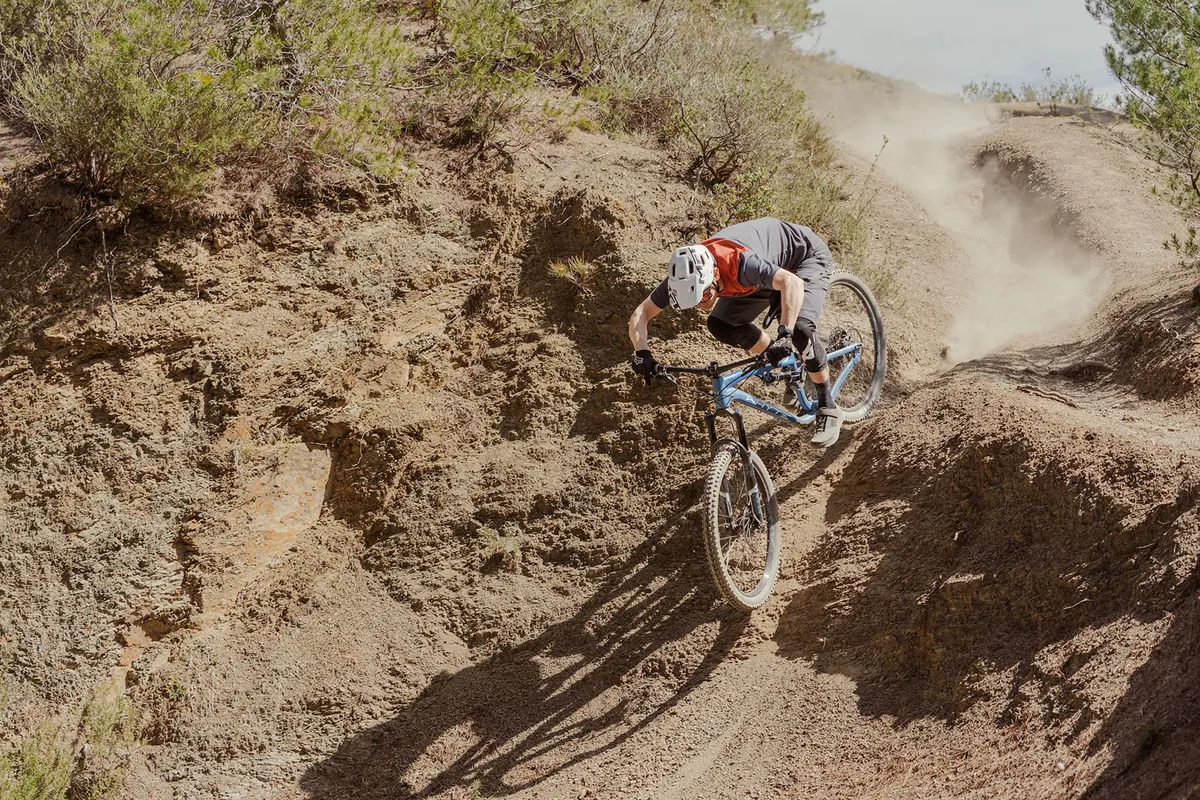
The overall feeling of the T-140 is one of quiet competence. The bike itself is rattle-free, while the Fox suspension has a well-damped, but not harsh feeling, that smoothes the way without fuss.
Set up well, this isn’t a bike that feels like a bucking bronco. It controls impacts deftly through the wheels before they make their way to the bars and pedals.
The fairly long 1,250mm wheelbase (Large) works with the suspension to calm fore-aft pitching as the bike goes over trail features, while the rear suspension soaks up hits big and small.
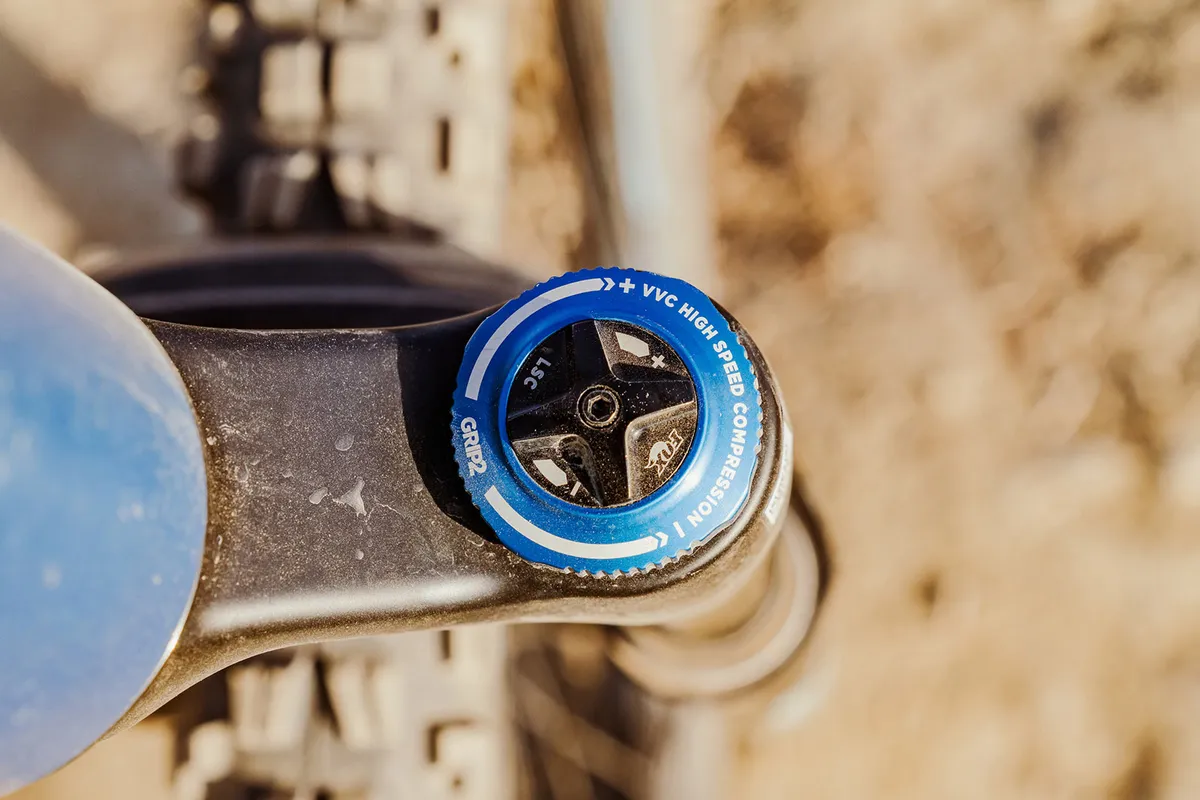
At the front, the 34 Performance Elite gets the top-spec GRIP2 damper from Fox. I’ve been critical in the past of the GRIP2, but on my test bike at least, the fork felt great – smooth, comfortable and very well controlled. It's an improvement on the Fit4 damper found previously on this level 34.
The rear end encourages you to push the bike harder on technical tracks, with plenty of control when encountering medium and big hits.
Larger, or faster riders might find themselves pushing the 34 towards its limits – on bigger impacts I managed to clang the fork’s internals against the bump stops. It can get a bit squirrelly under heavy braking round tight turns, but it recovers well and enables you to move on.
In its slacker setting, the 64.7-degree head angle and 330mm BB height combine to help the T-140 carve beautiful corners, holding the line through curves whether flat or supported. I found it easy to weight the front wheel, enabling the front tyre’s shoulder tread to engage in the dirt.
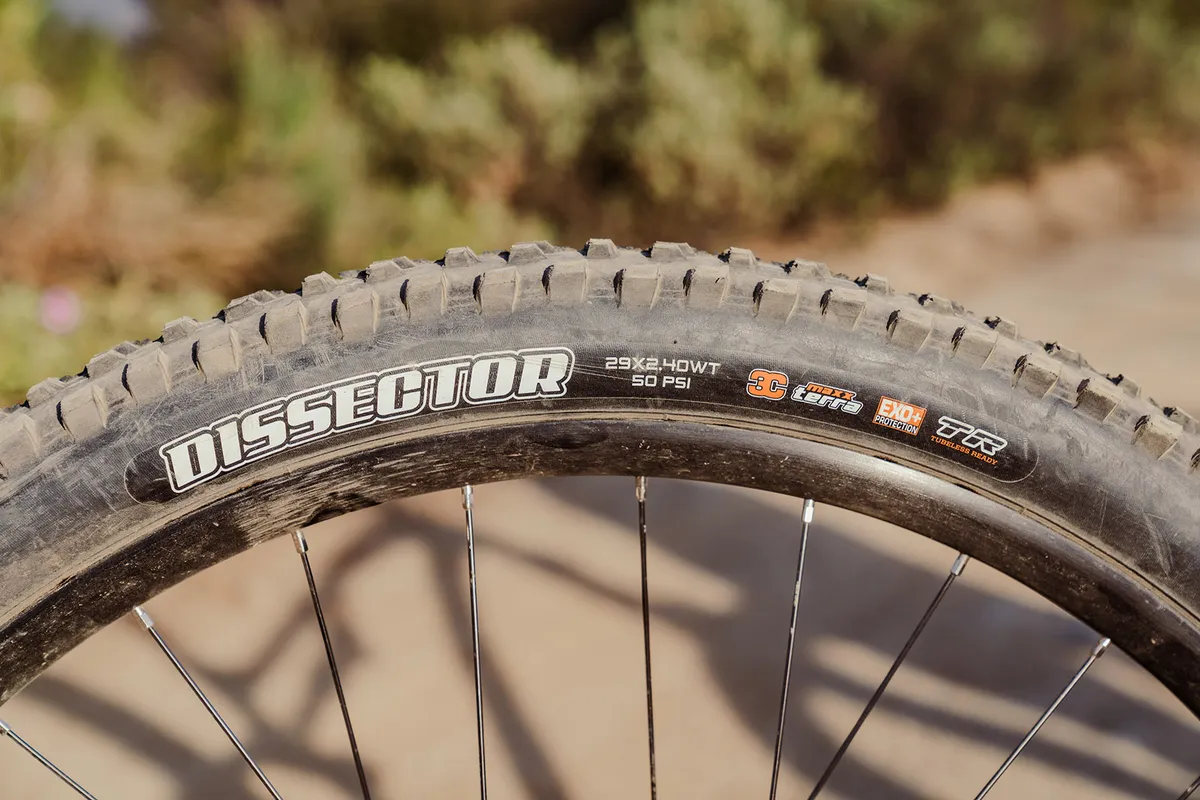
The wheels are shod in sensible Maxxis tyres – the Minion DHF is a popular choice for good reason. Its rolling characteristics don’t detract from serious grip on a wide range of surfaces, and its cornering control is stellar for what is an all-rounder tyre.
The Dissector rear tyre is a smart choice for riders looking to blend moderate rolling resistance with ample bite when the going gets tough. Its tread isn’t overly deep and it has a certain zip along smoother surfaces. However, a more aggressive shoulder tread aids cornering performance.
Using the thicker EXO+ casing for that rear tyre shows Whyte’s product managers understand what the modern trail rider needs.
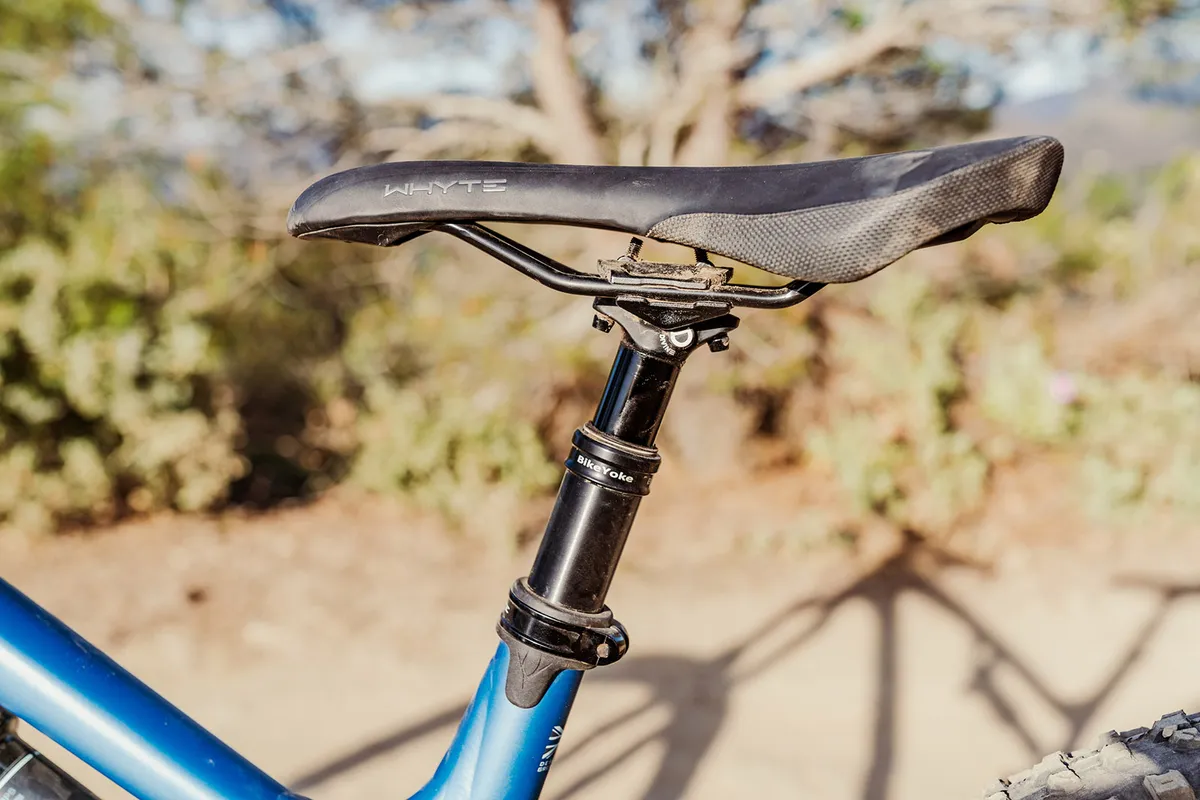
SRAM has been picked for the bike’s stop-and-go kit, and it all combines neatly on the bars thanks to its MatchMaker clamps.
While Shimano’s mechanical shifting has the edge in my opinion when clean, SRAM’s kit feels better when coated in mud. The G2 R brakes, though, can’t match equivalent Shimano stoppers.
Overall, the T-140 is the all-rounder trail bike pick. It’s a happy companion on long days out, with big climbs, and thanks to its reassuringly composed suspension, doesn’t throw its toys out of the proverbial pram when tackling more technical tracks. The limited number of sizing options is one of my few bugbears.
How does the Whyte T-140 RS compare to the Merida One-Forty 700?
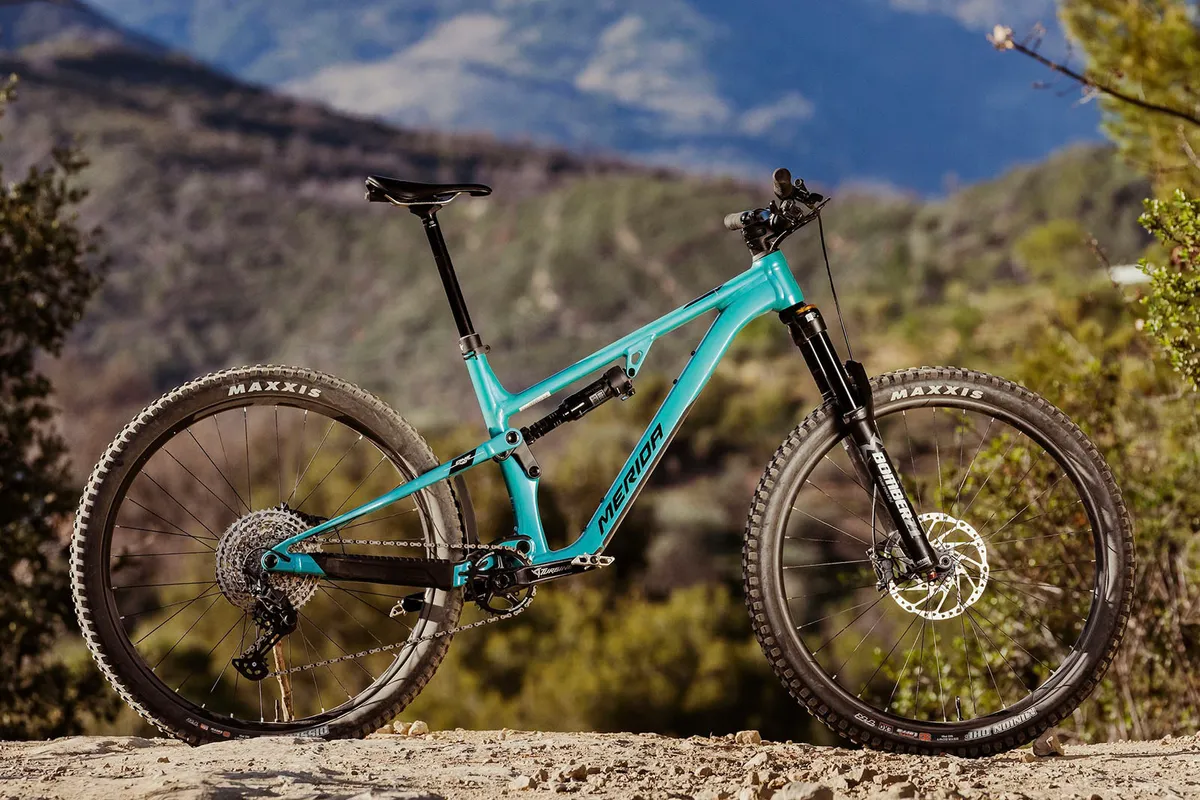
Both bikes feature alloy frames that are nicely constructed, and are targeted at similar rider profiles.
The Whyte’s skinnier fork and shorter stature gives it a really agile and ‘light’ feeling on the trail, whereas the Merida (in its Long size, equivalent to a Large) feels as if it can motor over everything.
The Whyte’s higher price allows for better-quality dampers on paper. The Merida’s Marzocchi Z1 fork feels great and the shock is ample in its performance, it just doesn’t have the same level of adjustability as the kit on the Whyte.
Whyte T-140 RS 29er bottom line

The T-140 RS is a solid option for trail riders looking for a bike that’ll tackle big rides day in, day out. It’s calm over the rough, agile in tight terrain and climbs without fuss.
It might not be the best-value bike out there, but other than the brakes, there's little to complain about on the spec-deck.
Trail Bike of the Year 2023 | How we tested
This bike was ridden as part of our 2023 Bike of the Year test. It was compared to seven of the best trail bikes.
I took all the bikes to the same locations and trails for some dedicated back-to-back testing on a wide variety of terrain.
From hand-dug cheeky tracks in the woods to trail centre laps and Bike Park Wales' rocky runs, I ensured the bikes were exposed to every type of trail such a bike is likely to be ridden on.
Riding the bikes back to back, usually with four bikes in each testing session, ensured I was able to pick out the finer performance points of each one.
Our Trail Bike of the Year contenders
- Cannondale Habit Carbon 3
- Cotic Jeht Mullet Silver SLX
- Marin Rift Zone 27.5 XR
- Merida One-Forty 700
- Trek Fuel EX 8 Gen 6
- Vitus Escarpe 29 CRS
- Whyte T-140 RS 29
- YT Jeffsy Core 3
Thanks to...
Thanks to our sponsors Crankbrothers, FACOM Tools, MET helmets, Bluegrass Protection, Supernatural Dolceacqua, Le Shuttle and BikePark Wales for their support in making Bike of the Year happen.
Product
| Brand | whyte |
| Price | 4099.00 GBP |
| Weight | 15.6000, KILOGRAM (L) - without pedals |
Features
| Fork | Fox 34 Performance Elite, 140mm travel |
| br_stem | Whyte Gravity, 35mm |
| br_chain | SRAM |
| br_frame | 6061 aluminium, 135mm travel |
| Tyres | Maxxis Minion DHF 3C Maxx Terra EXO TR 29x2.5WT (f), Maxxis Dissector EXO+ TR 29x2.4WT (r) |
| br_brakes | SRAM G2 R, 180/180mm rotors |
| br_cranks | SRAM X1, 32t |
| br_saddle | Whyte |
| br_wheels | RaceFace AR-30 |
| br_headset | FSA Orbit |
| br_shifter | SRAM GX |
| br_cassette | SRAM PG-1230, 11-52t |
| br_seatpost | Bike Yoke Divine 160mm |
| br_gripsTape | Whyte |
| br_handlebar | Whyte 6061 Alloy, 780mm |
| br_rearShock | Fox DPS Performance Elite |
| br_bottomBracket | SRAM DUB BSA |
| br_availableSizes | M, L, XL |
| br_rearDerailleur | SRAM GX |
